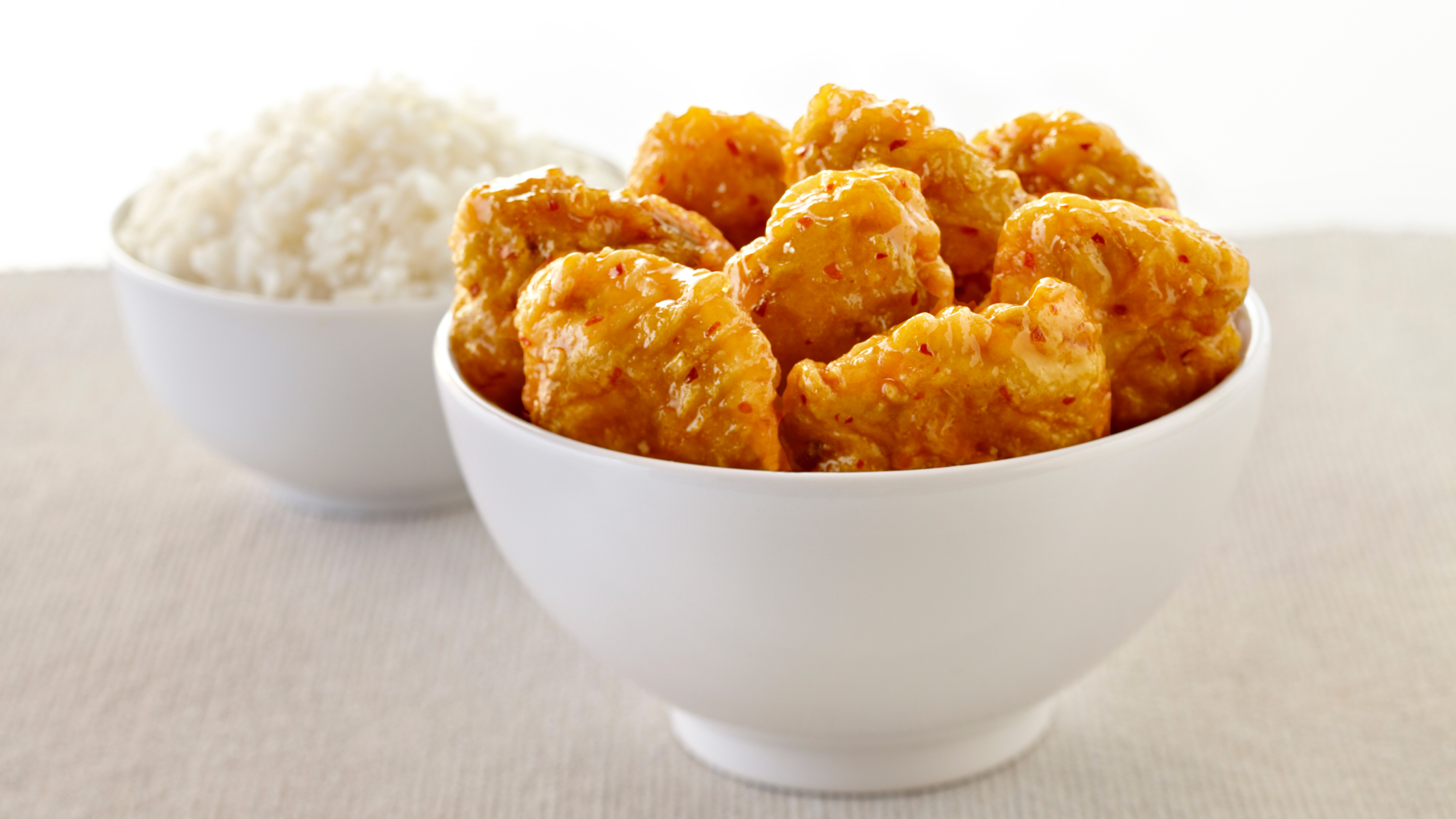Panda Express' Orange Chicken Remains The Pinnacle Of Junky Chinese-American Takeout
The closest I ever came to being a racist was over orange chicken. My Hong Kong immigrant parents never expressed their views aloud, but their attitude towards Chinese-American food was clear: These dishes were traitorous. They weren't true Chinese. No card-carrying Cantonese would even sniff at crab rangoon or chop suey. Part of the reason was the unfamiliar flavors. Cream cheese and sickly sweet neon-colored sauce just weren't recognized by our palates—you might as well have called it German cooking.
After my family immigrated to America when I was 11, I was introduced to Mexican, French, barbecue, American Southern, Turkish, English, Argentinian food for the first time. Never once did our family order Chinese-American takeout. Our family regarded that type of food with a disdainful sneer. Looking back now, what we perceived as inauthenticity may have represented something deeper—pride, assimilation, my parents' fear of losing our Chinese identity. This might sound like an overreaction, but food plays such an important role in our culture, we often greet each other with: "Have you eaten yet?" And that's why growing up I despised the idea of orange chicken or General Tso's chicken, despite never once tasting it. Prejudice over a culture based on the belief ours is superior—if that's not textbook racism, it's dangerously verging on the idea.
I didn't try General Tso's chicken until I was in college. Freshman year was a time for new experiences, and the Chinese takeout down the street was a gourmet splurge from whatever was slopped down in the dorm cafeteria. And when I finally tried these deep-fried-and-sauced hunks of chicken, what other possible reaction was there for this poor 18-year-old other than to think it was freakin' delicious? A thousand miles away from my family for the first time, I ate this crunchy and goopy chicken three times a week, and popped crab rangoons as if it were free pills.
Much of my biases had disappeared in college, but still, my dignity was too fragile to step foot inside a Panda Express. I thought (and still think) the name's terrible, sounding too jaunty to be taken as a serious restaurant. It might also have been because it was a chain, and adventurous gourmands tend to treat restaurants with multiple locations as homogenous cookie cutters. History repeated itself, and I regarded Panda Express with a disdainful sneer.

It wasn't until a decade after college, that jonesin' for Chinese food one day, I ventured to the mall food court across the street from work. I saw that bear, bit my tongue and thought: "Well, Panda it is." Like any Asian food stall enterprise, a Chinese lady offered free samples to passersby. She was handing out its orange chicken on toothpicks. Any ill will disappeared after that bite: Simultaneously crunchy, pillowy, and sticky, it was a masterful interpretation of General Tso's chicken with a citrusy tingle, with every element of savory, sweet, tangy, and spiciness dialed to its correct level. Better yet, it used only dark meat chicken, an acknowledgment that chicken breast had no place in Chinese restaurant kitchens, even if customers demanded it as a healthier option. I placed a full order and came back the next day.
Panda Express claims orange chicken as an original creation, born 30 years ago at one of its locations in Hawaii. Few Chinese food scholars have disputed this claim, but they'll also say the dish is just a slight tweak on General Tso's chicken. (General Tso's chicken can be traced back to its acknowledged inventor, Taiwanese chef Peng Chang-kuei, who opened a restaurant in Midtown Manhattan in 1974. According to the book The Fortune Cookie Chronicles: Adventures in the World of Chinese Food, after a local television station aired a segment about the dish, 1,500 viewers wrote in asking for the recipe. The dish was emulated in Chinese restaurants across the country) As for Panda's orange chicken, it's by far their top seller, and last year—according to NPR—the chain sold 80 million pounds.
It remains a reliable dish today: Skinless dark meat chicken are battered and deep fried, then finished in that classic Chinese style of wok-tossed over a scorching jet burner flame. Garlic, ginger, soy sauce, and chiles that bolsters the savory side of the glaze, honey and brown sugar on the sweet end, while Chinese black vinegar and orange peel oil provides the acid. That balance is the key. There's no dominating element, just a deeply flavored notion of whatever Chinese takeout tastes like in your mind. Its textural diversity is another plus—there's a welcomed mix of meaty two-biters and molar-crunching gnarls of fried batter. White rice is the ideal accompaniment here, clinging onto the glossy chicken hunks and taming that sticky, pronounced sauce.
Simply put, this first-generation Chinese immigrant thinks orange chicken is damn delicious. It was in finally accepting that this genre of Americanized Chinese food could live alongside the Chinese food of my youth—like two Venn diagram circles with overlap—that allowed me to appreciate both on their respective merits.
